Your donation will support the student journalists of Carmel High School - IN. Your contribution will allow us to purchase equipment and cover our annual website hosting costs.
Curriculum changes in English, history departments inspire alterations in content representation for teachers, students
September 23, 2021
For junior Laura Martens, taking the AP Literature course last year was an eye-opening opportunity to read an array of different books.
“We read The Great Gatsby, Frankenstein (and) As I Lay Dying as a class,” Martens said. “But then we also have a lot of books that you get to pick; for example, (one) month, I picked The Handmaid’s Tale. There were a lot of other options—you could do 1984. Or you could do Slaughterhouse-Five. There are a lot of different books.”
According to the College Board, which organizes the curriculum for the course, AP Literature focuses on “reading, analyzing and writing about imaginative literature (fiction, poetry, drama) from various periods.”
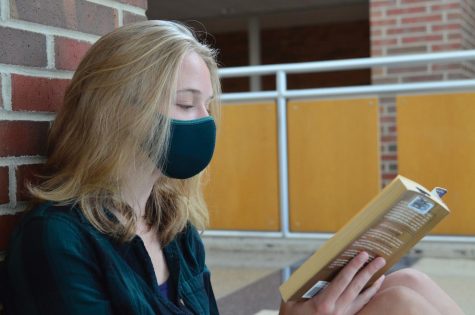
However, Martens said she has a grievance against some of the book selections in the course.
“I still think it’s crazy that it is 2021 and all of the required books are written from a very specific perspective. I think that they’re trying to fix that, and they’re getting better. However, I do wish that some of the required reading was more diverse,” she said. “As of right now, the only books that are required (to read) are all written by white authors about white people.”
Martens is one of thousands of students at CHS who will have taken a literature course by the time they graduate. According to Martens, literature represents an application of English to real-world situations, especially in a time of globalization and connection.
Although a large number of students opt for the AP course, one could choose to take the International Baccalaureate (IB) Literature course as well. According to Katie Overbeck, IB Literature teacher and IB Program coordinator, the course spans two years and has guidelines for required reading.
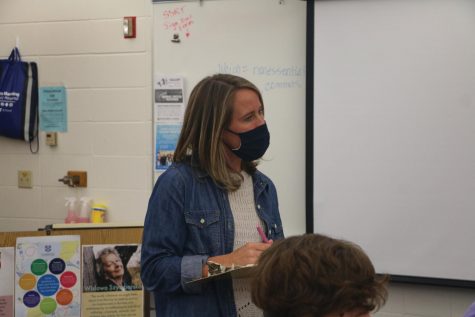
“In our course design from IB, we are told on the front end that we need to study four works in translation. So since our instruction is in English, that means we have to choose four works that were not originally in English, and then we have to choose five works in our home language, which is English for our school,” Overbeck said. “As far as what we choose for the works in translation or the free choice books, we are able to kind of pick what we think will be a variety of texts for our students to read.”
Martens, who is taking the IB Literature course this year, said the class helped her access a more diverse set of literature in the classroom.
“I feel like AP (Literature)––that’s the College Board––that’s the generic literature class. If you want diversity, and if you want to hear a variety of perspectives, then you have to tag that International Baccalaureate on the front; you have to specialize. You have to say, ‘Oh, I want diversity,’” she said. “It’s crazy to me that (in) the AP (Literature) class, which is such a generic, big, broad term, the stuff covered in it isn’t big. It isn’t broad. And I don’t think it really covers literature.”
With that being said, Overbeck noted the English department will revise and review its curriculum, including the book selections for each course, within the next few months and implement the changes for the 2022-23 school year.
“The sets of texts that have been picked for (different grades) have actually very much increased and the diversity and the inclusion within those texts for this next year’s curriculum,” she said. “However, IB, prior to that, would definitely have been the most diverse set of texts anywhere in the building. Now, with the next rollout of curriculum, I’d say that everybody’s kind of coming on board with that.”
This comes a year after the department chose to add new courses to the Program of Studies, including Biblical Literature and Ethnic Literature. Moreover, the rift on curriculum diversity is not solely in the English department. The social studies department, which is also in the process of revising and approving its curriculum this year, recently established an advisory board composed of students to oversee some of the changes.
Pol Berger Romeu, member of this student advisory board and senior, said, “As a member of the social studies student advisory program, I hope to help modify the curriculums in order to make the courses a platform for students to learn about the key events, people and trends in history and form their own thoughts about these topics. This will allow for diverse perspectives in the classroom, creating better discussion and critical thinking.”
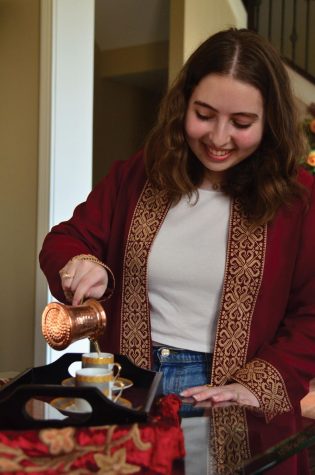
According to junior Sarah Alhaddad, who lived in the United Arab Emirates for part of her elementary school education, there are some differences in how content is covered in history classes in the United States due to international political differences. She said she supported such changes to diversify social studies content, as suggested by Berger Romeu.
“I think an example would be like the Palestinian-Israeli conflict. This is what I’ve seen that has stood out to me the most. But not just in Abu Dhabi––in any Middle Eastern country, any type of history on that subject would be through a Palestinian lens (when I was growing up),” Alhaddad said. “But when you come here (to) the U.S., it’s all very pro-Israeli. Moving here was like a culture shock. I was like, ‘Wait, this is what we’re doing?’ There’s a huge, huge difference. It’s probably like that in other countries—any conflict that the U.S. is trying to teach us about is more or less from a lens that protects us.”
History teacher James Ziegler said, “Throughout much of American history, a lot of U.S. history textbooks are oftentimes very whitewashed or just hold from one narrative or one perspective.”
Ziegler’s term—”whitewashed”—refers to the practice of glossing over or leaving out important events and underrepresented communities which often includes minority and marginalized populations.
For sophomore Matthew Paraboschi, whitewashing occurs when educational institutions apply a European twist to educational content without providing multiple perspectives to a particular event, and, thereby, not portraying the whole story.
However, in Paraboschi’s view, current social studies curricula at this school have covered a sufficient global perspective and adequately represented different groups.
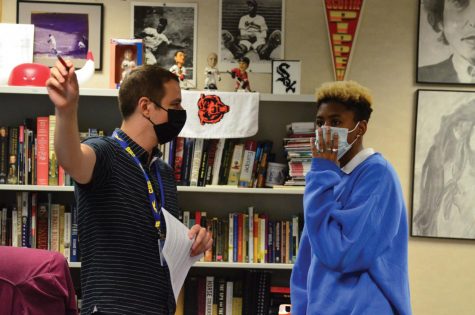
“I took AP World (History) and you can’t really call it a world history class if it’s not centered around the whole world,” Paraboschi said. “I thought that there was equal representation of all parts of the globe. I still remember different units and so many different continents and stories.”
Paraboschi also said taking AP World History and AP European History allowed him to recognize that historical figures such as Christopher Columbus, who had been seen in positive lights in his prior classes, were portrayed more realistically in the context of their actions.
“In classes like AP World (History) and AP (European History), you learn about context and how (historical figures) are not as good or sometimes better than what you thought they were,” he said. “(For example), I’m not sure if (Christopher Columbus) should be portrayed as a hero, but I feel like he should be taught about and kids (should be given) a little bit of an ‘ignorance is bliss’ standpoint for a couple years, until, I guess, in sixth grade and seventh grade where they can fully understand the context.
Berger Romeu said his experiences with social studies curriculum have aligned with Paraboschi and all of his teachers have made sure to teach both sides of a topic.
“I hope to push all teachers to do the same as the ones I’ve had in my four years and modify the curriculums to encourage it,” he said.
Ziegler said he agreed, and hopes changes in social studies curriculum will help students form stronger connections between historical topics from the classroom and current events.
“(A) big thing I want to do for my students is to really make sure that they can see how what we’re studying in class is relevant to their lives,” he said. “One of the things that I’ve helped push for is myself and (social studies teacher Kenneth) Browner and (Justin) Quick (social studies department chairperson), last year, we had advocated for the addition of an African American history course to the Carmel High School curriculum.”
U.S. History teacher Allison Hargrove said via email, “I want kids to focus on the ‘big ideas’ rather than the trivial. I hope they remember the nuances of history, yes, but also understand the history in the larger context.”
Martens agreed and said she wished the school made stronger links between the English and history curricula to demonstrate how social issues have changed perspectives over time.
“There isn’t one book that tells the entire story of America,” she said. “And I think it’s silly to assume that just because people want to see more versions of the American voice that you’re somehow degrading the classics. Just making sure that people understand that and making sure that this transition is handled respectfully (is important).
“But I already think it’s happening,” Martens said. “I think it’s just going to continue happening, and in classes like AP (European History and) AP World (History), that kind of happens automatically, because of the subject matter. The AP (European History) book always has chapters in it (that) makes sure you understand how imperialism may have been good for Europe, but it sucked for everyone else; it really messed up the way our world works with trade and racism and immigration, all of these things,” she said. “I wish we talked more about that.”
Although Martens said the AP Literature course is edgy at times in terms of diversity, she said her teacher was a significant force who tried to facilitate a more holistic learning environment.
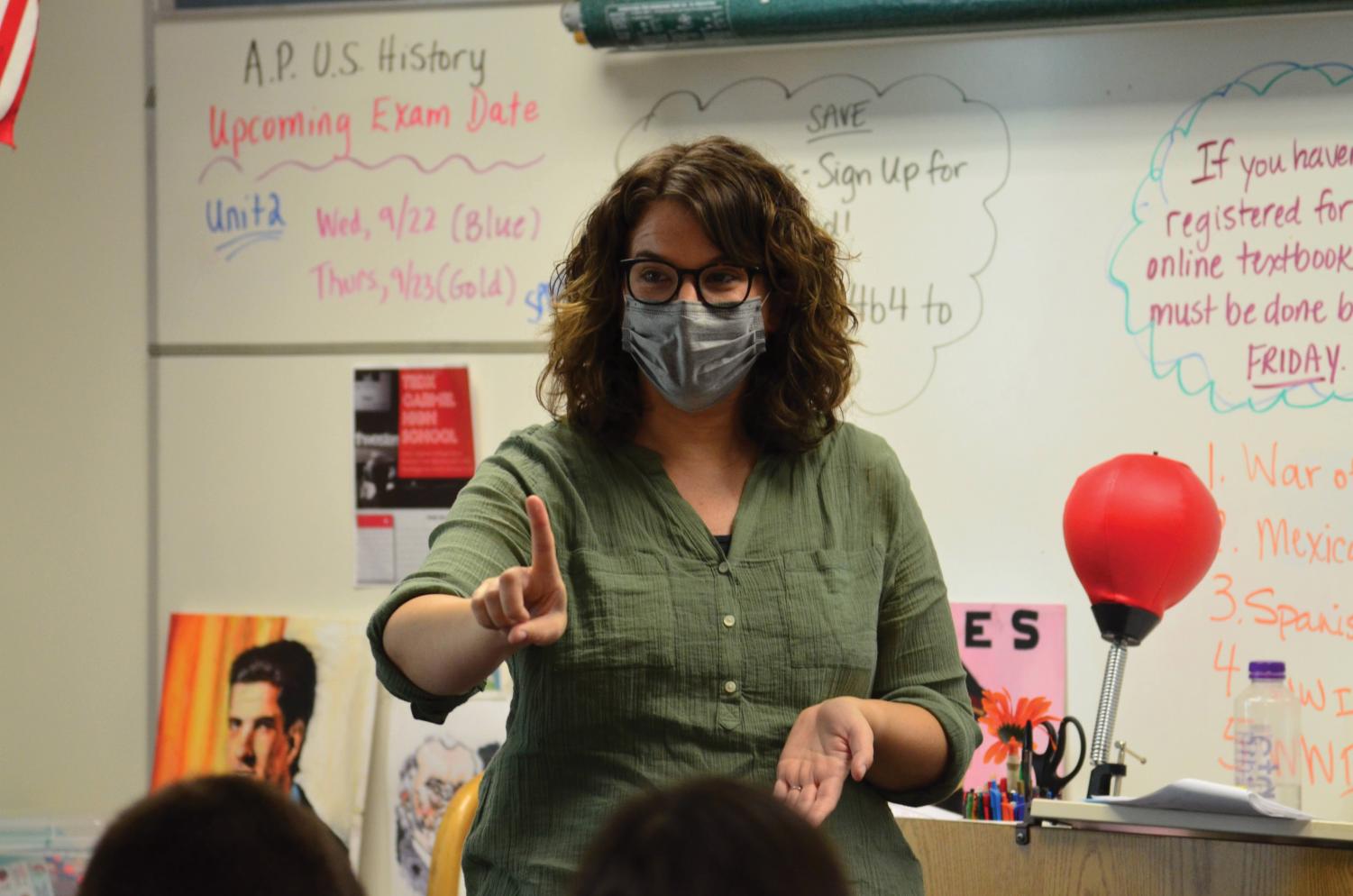
“(My English teacher) does a good job when we’re reading poems and other things in class to supplement that; he tries to get other perspectives,” she said. “So as we’re reading As I Lay Dying and works by William Faulkner, which is Southern Gothic literature, we’re also reading poems written by people who had been enslaved, and people who were dealing with the trauma caused by (slavery) generations later. I think my teacher has done a good job individually trying to even it out, but I would say overall, the course is still extremely Eurocentric, contributing to this narrow-minded view of history.”
According to Overbeck, gradual changes allowed her to recognize how to choose texts that demonstrated diversity and encompassed the greatest number of perspectives possible.
“I’m a child of the ’70s and ’80s, and I was really happy with what I thought was representative. But, boy, when I look at (the books) now, it was a lot of white authors, and it was white men. Now, I thought it was cool that I had some white men from the ’60s and ’70s thrown in there to balance the white men from the 1700s, but when you really look at what it takes to create an inclusive body of literature, it is so much more than that,” she said. “When I look back at the books that I have taught over 20 years of teaching, the vast majority remain American or European white men. And thankfully, in the last decade we have decided that that is not the only part of literature to be teaching, and hopefully we’re reaching more students because of that.”

However, according to Ziegler, such changes within the social studies curriculum are sometimes met with criticism despite cohesion within the department itself.
“I think we as a department are a pretty well-oiled machine, and kind of in agreement on a lot of these issues. And really, I think the contention is coming from a vocal minority of parents, outside of the school, who don’t actually even know what’s going on in the classroom (and) are spreading a lot of false and malicious information without even really having anything to base,” he said. “That doesn’t mean that we don’t have philosophical differences, as teachers, and some teachers like to emphasize certain topics more than others, but I think, overall, our department has probably been pretty unified in our positions.”
Martens added that no amount of curriculum changes can truly change what students end up learning throughout the year.
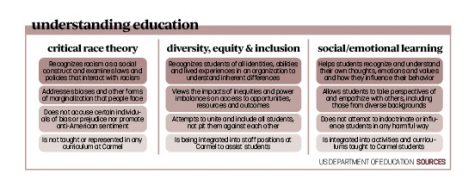 “It’s up to the individual how much you take the books to heart,” she said. “You can assign as many readings as you want, but in the end, it’s up to the person who was reading it.
“It’s up to the individual how much you take the books to heart,” she said. “You can assign as many readings as you want, but in the end, it’s up to the person who was reading it.
“In America, we have this huge issue with echo chambers. The headline that I read may be completely different from what someone else is reading right next to me and I think that is really important. It’s really important not just to have diversity in stories and backgrounds and ethnicity, but to have diversity in where you’re getting your information from, she said. “Be an informed consumer.”
